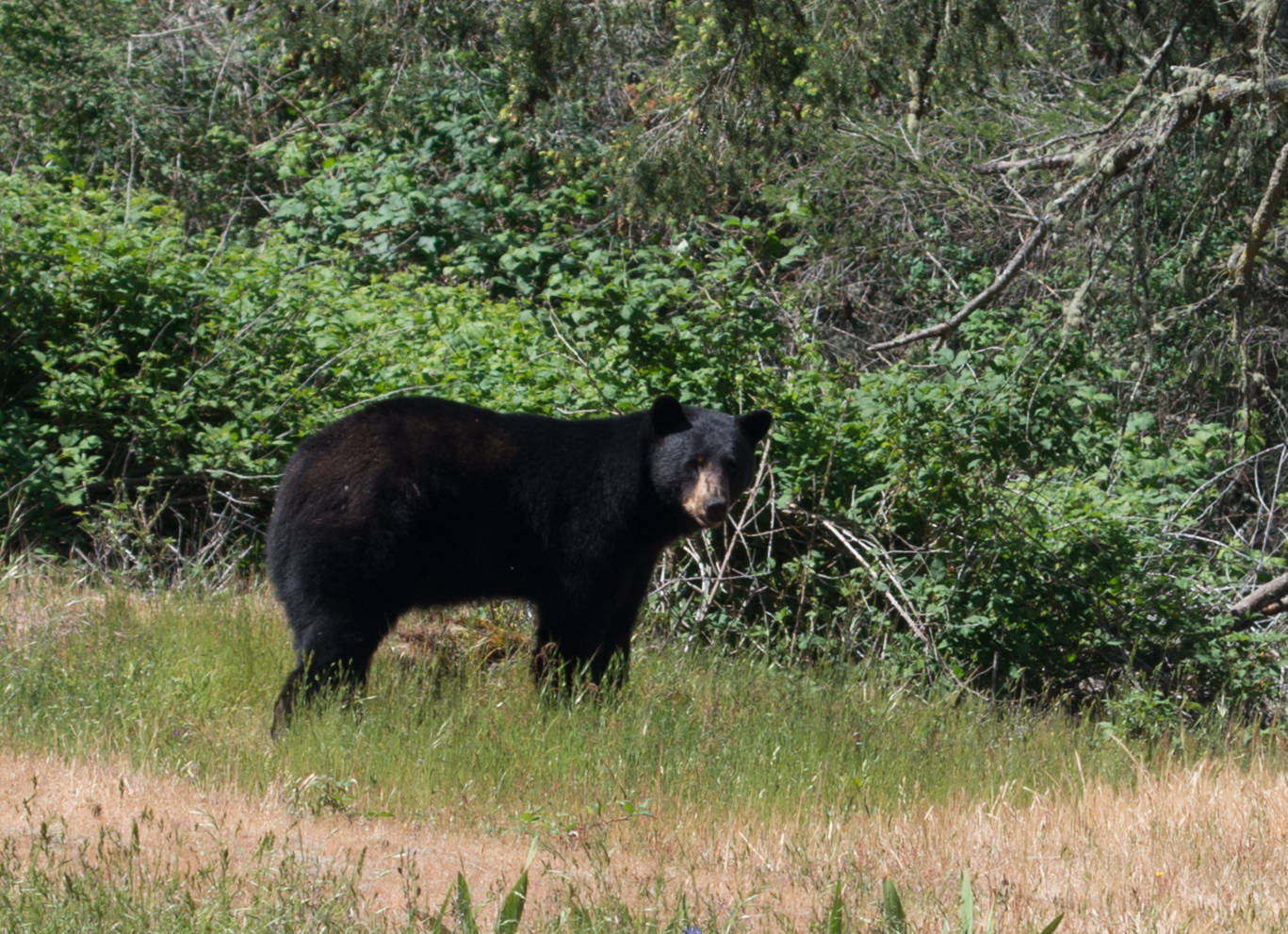While looking for love in all the wrong places, a black bear found its way to the San Juan Islands. Most likely, this recent island-hopping bear is male and searching for a female, which is common this time of year, said Washington State Fish and Wildlife biologist Ruth Milner.
“It is unlikely to stick around,” Milner said.
The bear seen on San Juan Island over the weekend of May 18-19 was first spotted on Camano Island, according to Milner. It then swam to Whidbey, over to Fidalgo Island, to Orcas and to Shaw. A ferry worker then spotted the animal swimming across the channel to San Juan. Although this is the second bear seen in the county in the last few years, Milner does not believe it is indicative of a new trend.
Historically, San Juan County was once home to elk, deer and several top predators. Cougars once stealthily stalked their prey throughout the islands, and wolves’ howls rang out across the Salish Sea. Black bears (Ursus americanus) are notorious for their swimming capabilities, according to Milner, and occasionally visited the San Juans in the past.
Vancouver Island is home to one of the largest black bear populations in the world, and Milner said she suspects the island-hopping Ursus may head in that direction. If crossing Haro Strait seems like an extreme journey, she said the bear has already accomplished several “long crazy swims,” demonstrating amazing swimming instincts.
San Juan County Sheriff Ron Krebs said there have been no complaints of the bear getting into garbage or being aggressive. Bird feeders appear to be its primary target. According to Milner, black bears are omnivores with a diet that consists of roots, fruits, grains, insects, fish, carrion and even small mammals.
“It would take down a small deer if it needed to,” she said.
Black bears are the smallest and most common bear in North America. Adults can grow to be 5 feet tall when standing on their hind legs. While they generally avoid people, Milner said black bear attacks are the most common because of their large population.
“[However,] bear experts will tell you that bear attacks, in general, are rare,” she added.
WDFW Sgt. Russ Mullins noted that this particular bear’s behavior has been benign and not aggressive toward people, pets or livestock. He encouraged property owners not to attract it by keeping garbage secure and taking down bird feeders if necessary.
Currently, there are no plans to trap the bear, according to Krebs, since it has been constantly on the move.
“We wouldn’t even know where to set a trap at this point,” he said.
Milner added, “We don’t trap animals that are not in trouble, and at this point, this bear hasn’t done anything.” She said she encourages people to leave it alone.
A young black bear was humanely trapped on Orcas in spring 2017. It was released in the Marblemount area where it was later killed, legally, during bear hunting season. Since the islands’ current bear visitor does not seem to be sticking around, WDFW would rather let it decide where it wants to go.
Krebs said that people should call the sheriff’s office at 360-378-4151 with sightings so staff can track the bear and see if it does settle into a neighborhood. If it does appear to be making San Juan County its new home, WDFW would be called in to help relocate the animal.
“We don’t want it to get hurt or hurt someone,” Krebs said, explaining that due to the human population density — especially with tourists in the summer — the islands are not suitable habitat for the animal.
A majority of islanders, according to Mullins, enjoy having a bear around. But, there are some who have talked about hunting it, which, he said, would be illegal.
“It isn’t bear season, and we would definitely investigate if the animal was shot,” he said.
Milner noted that not only is it not bear season, but because the San Juans do not have a bear population, it isn’t a designated hunting location. Therefore anyone pursuing the bear would be charged on two counts of illegal activity. Harassment, such as chasing it with a vehicle, also falls under the hunting category.
“No wild animal should be approached,” Milner said. “Enjoy the wildlife viewing, keep your distance and give them an escape route.”




